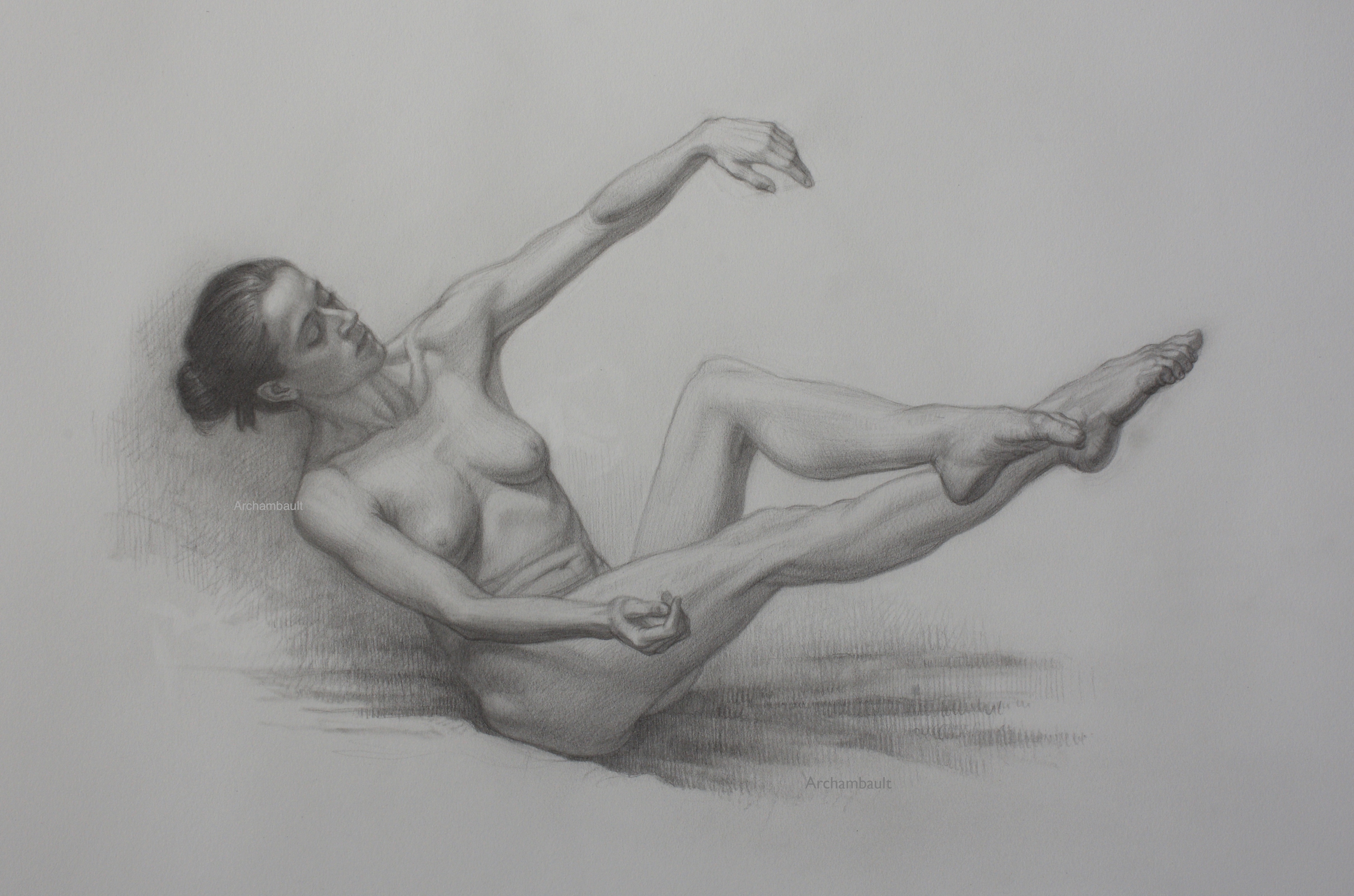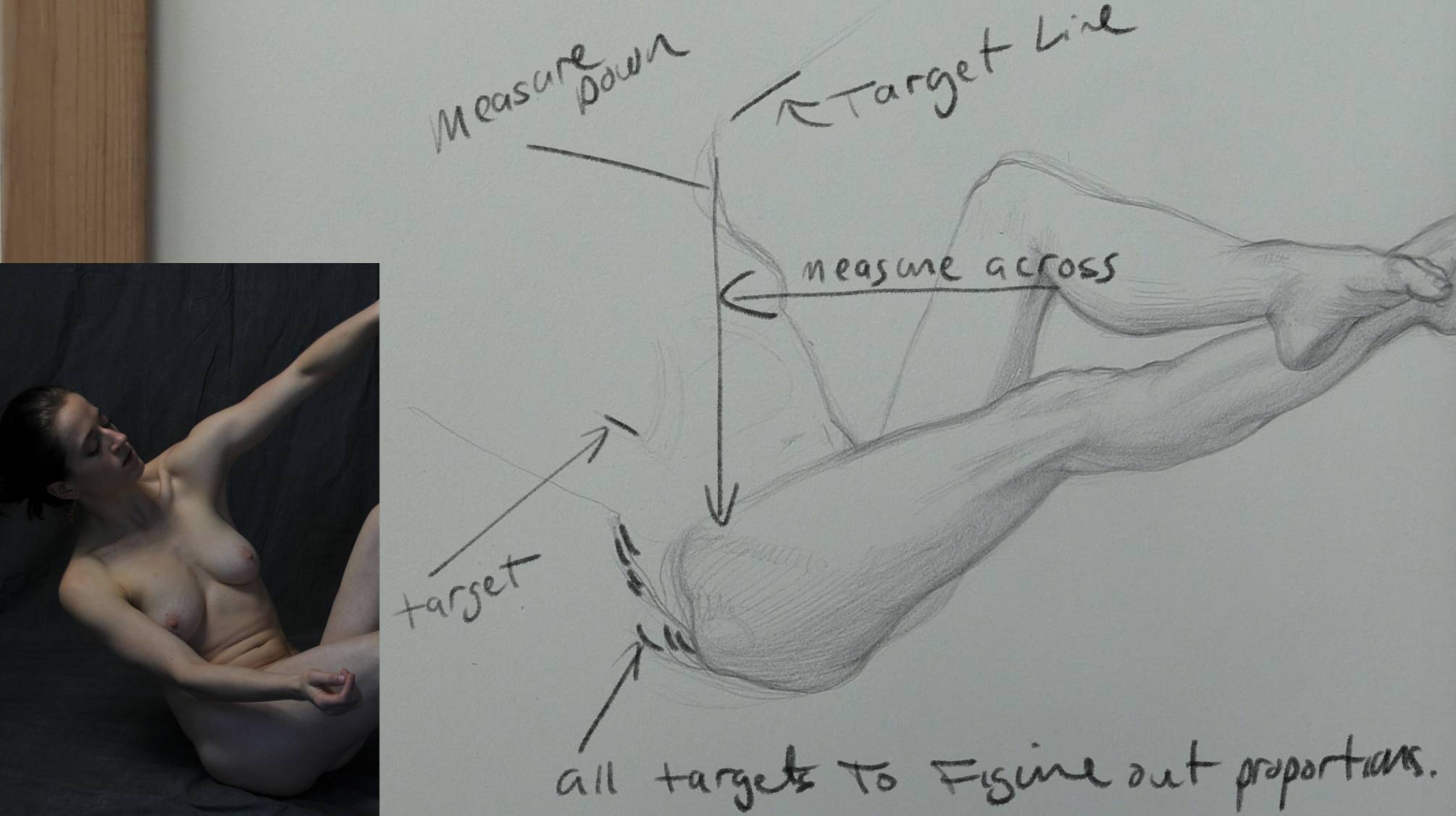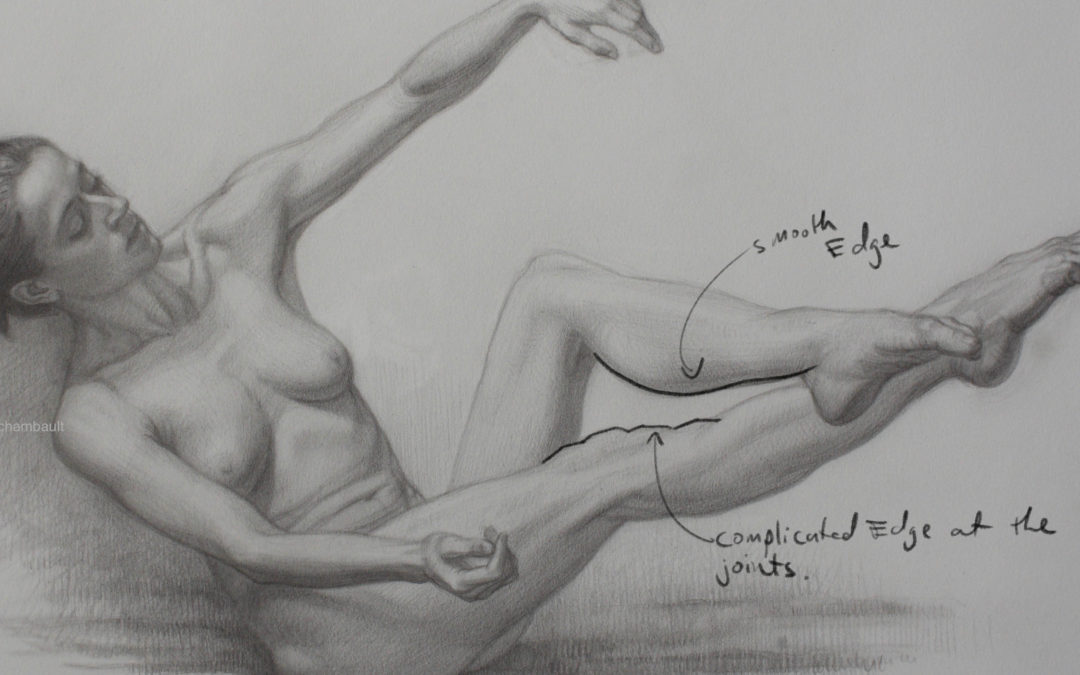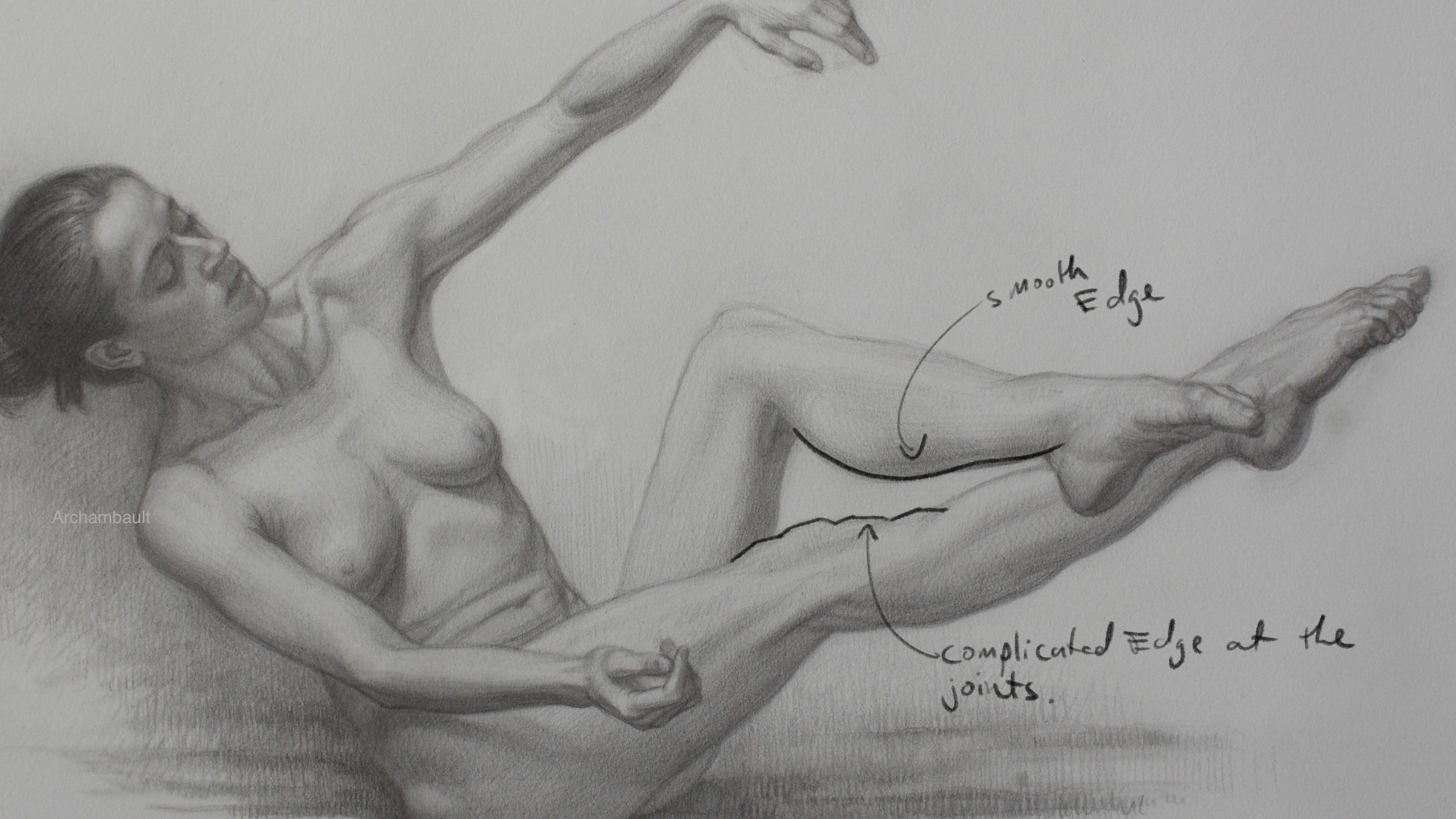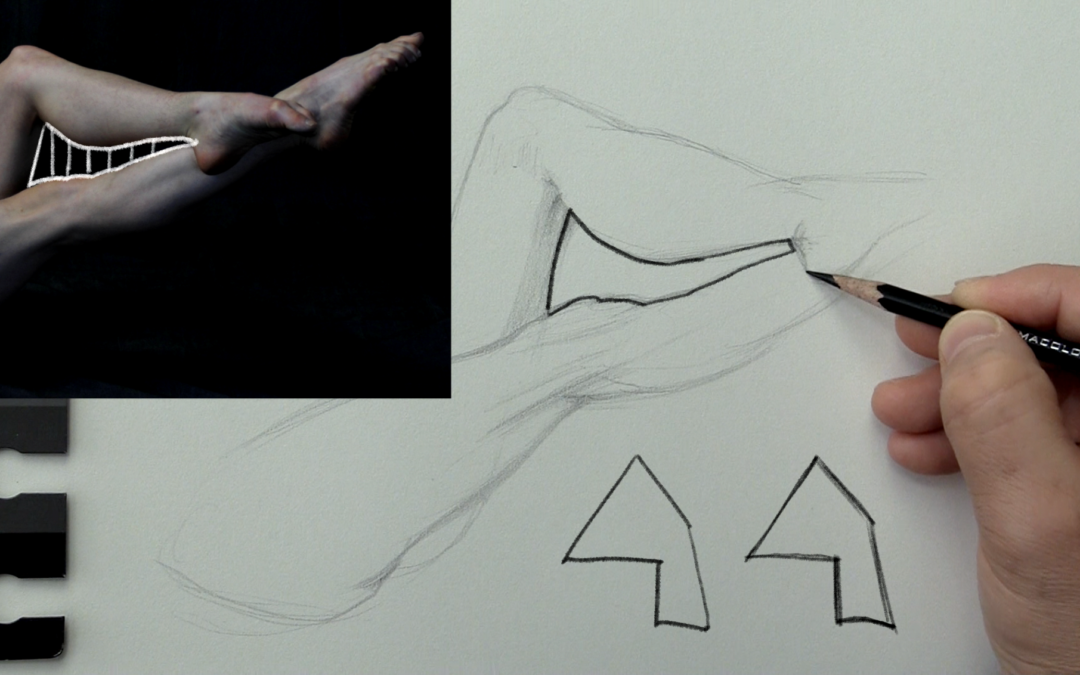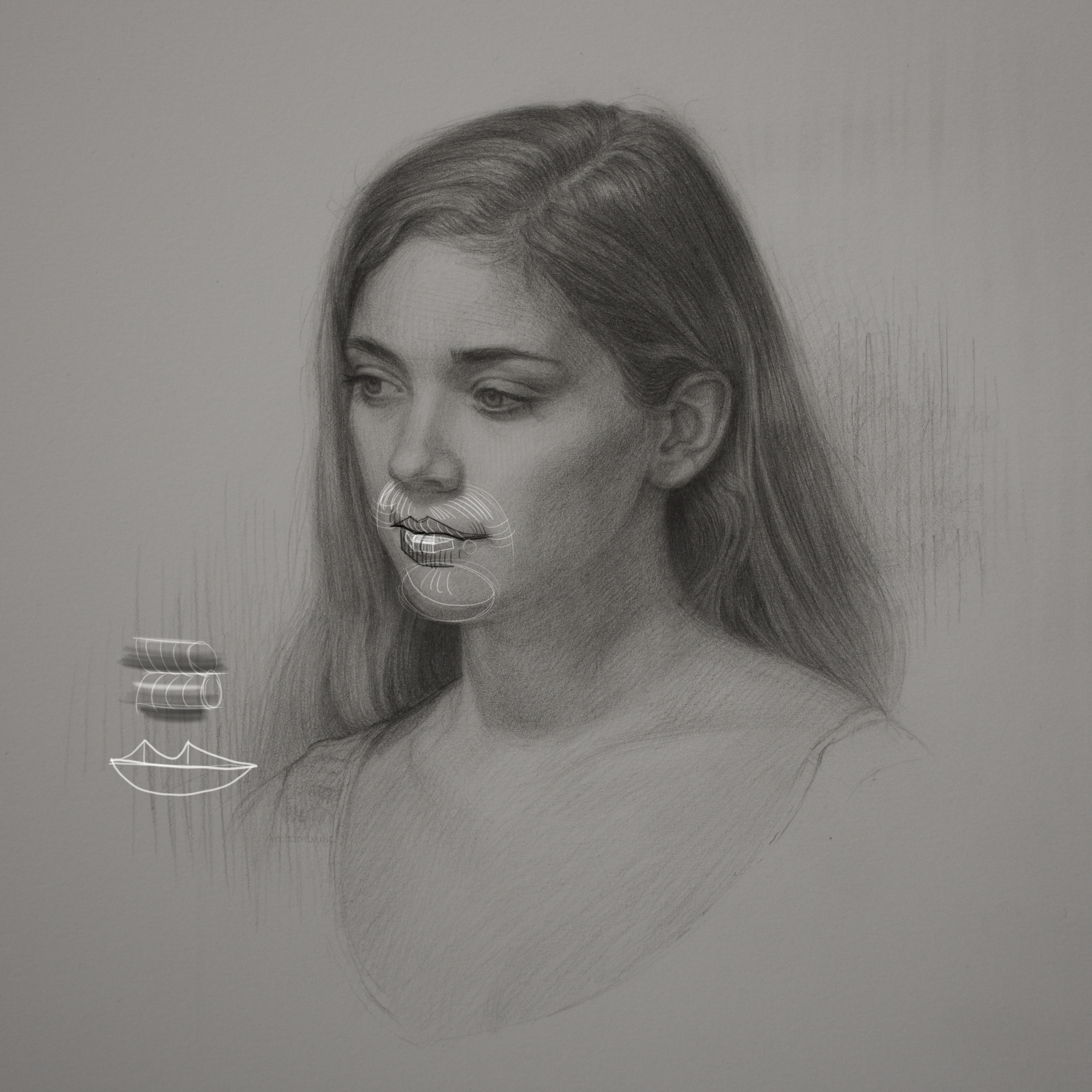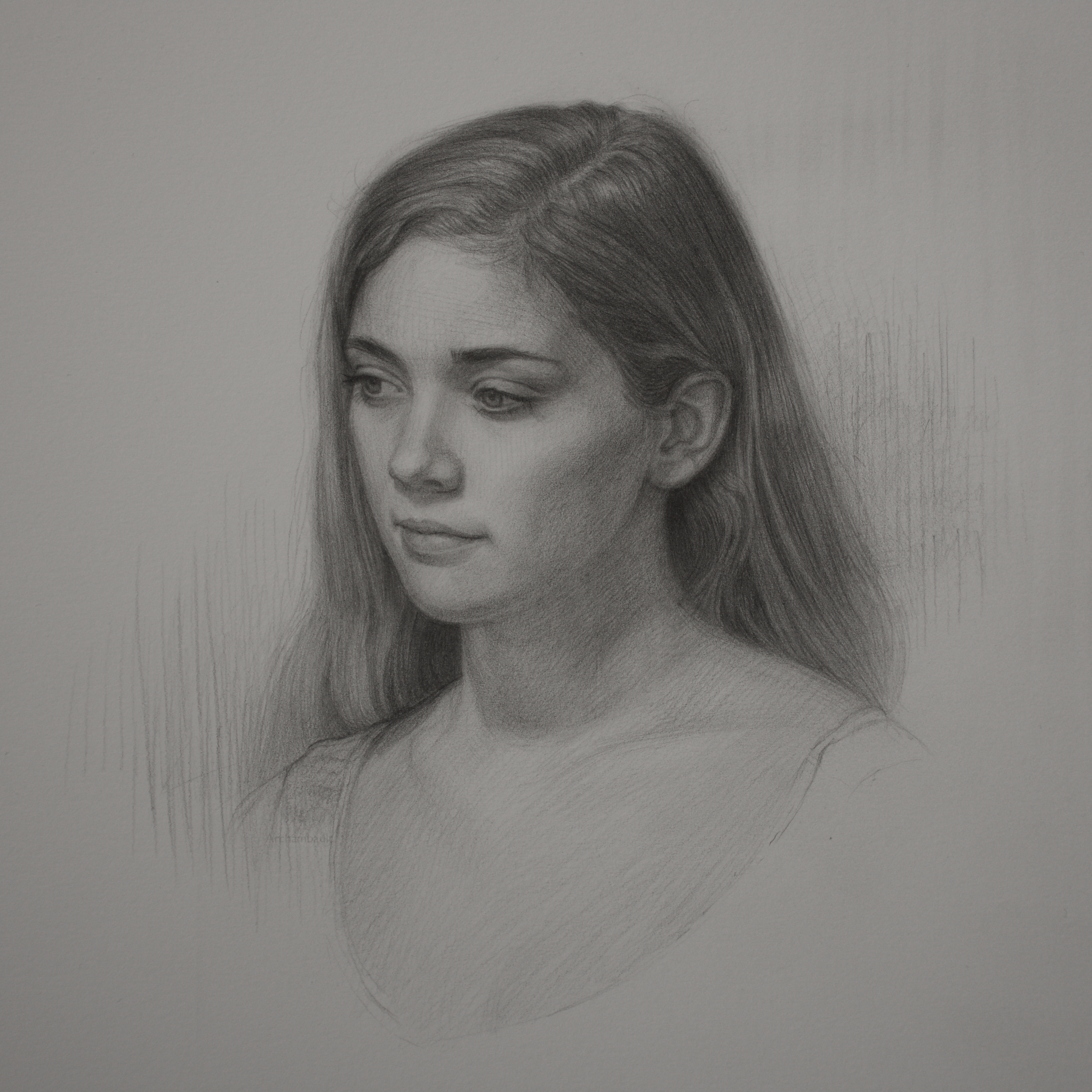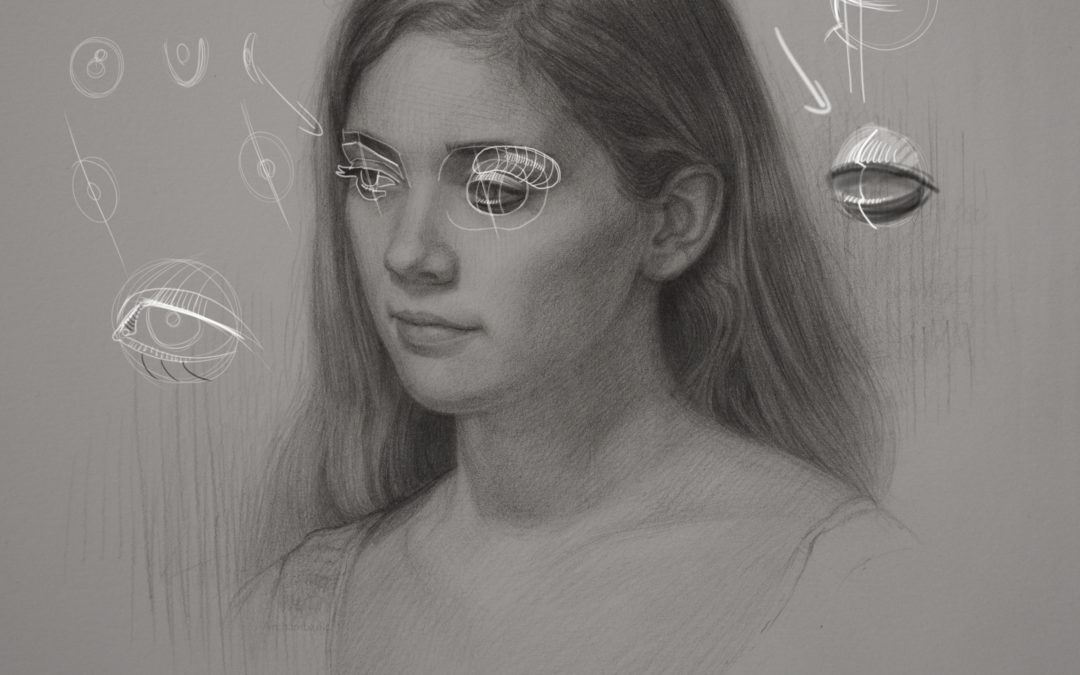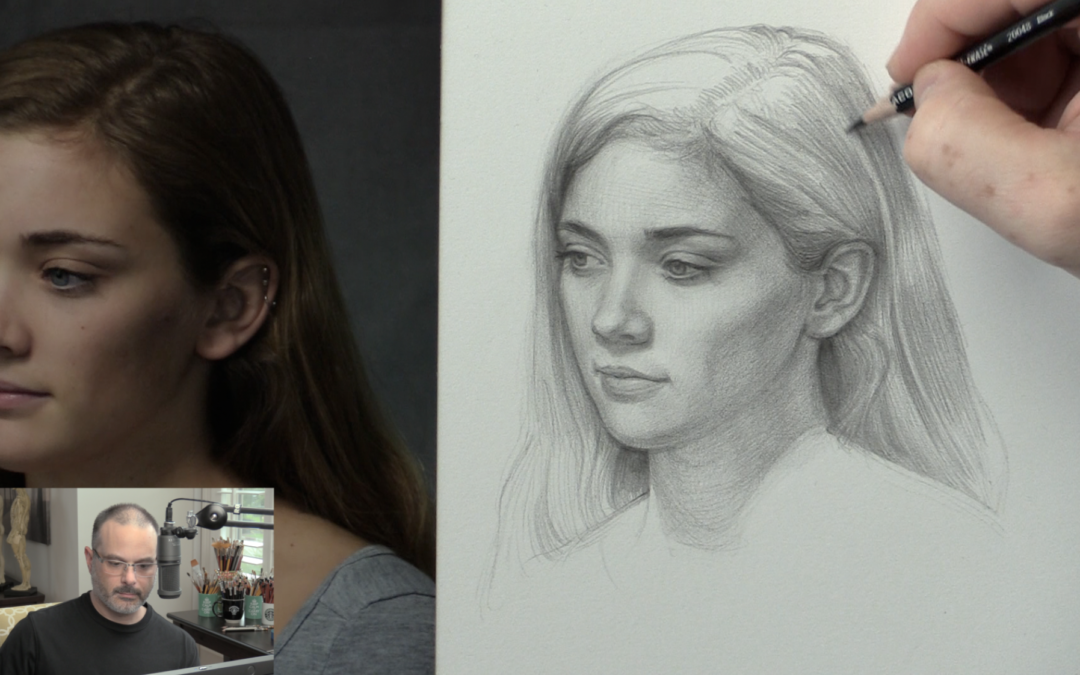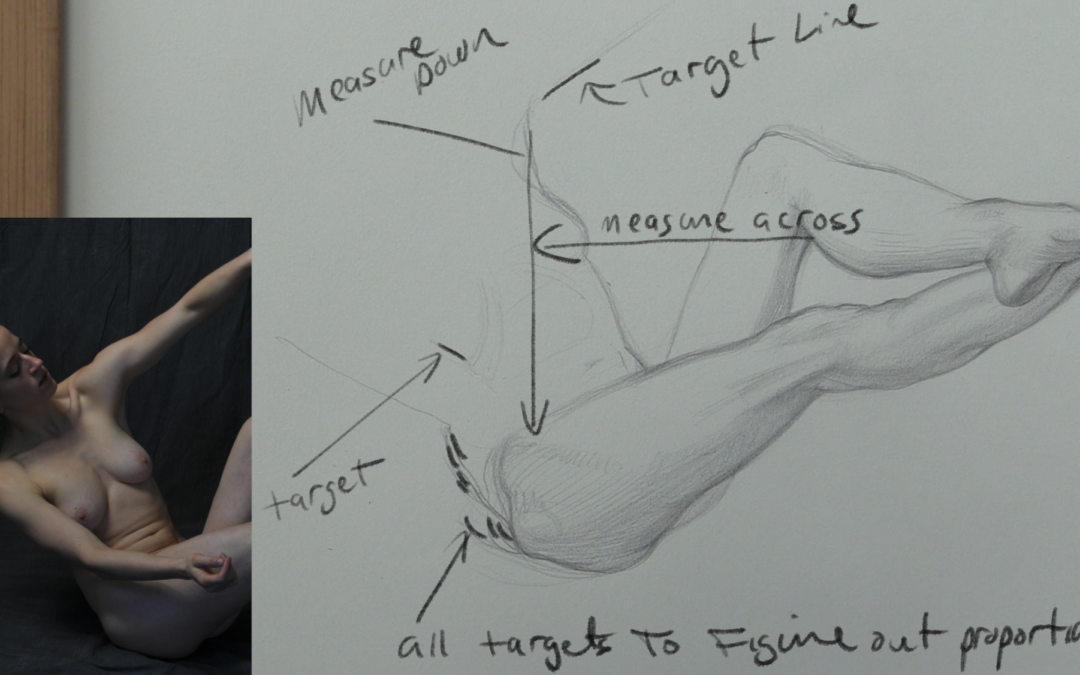
Mapping Out Proportions
With this particular figure drawing I started with an abstract shape. It’s definitely a different way to start. Now what I’d like to share with you is how to branch out from the legs into drawing the torso.
That is drawing the torso with correct proportions. On paper it sounds easy. But executing this is somewhat difficult. It takes good eye hand coordination.
The concept is to use targets to branch out. What are targets you ask? They are little marks that you place on the paper to estimate where the edge of an item would be. The edge of the torso, the edge of the arm etc.
You’ll also want to look at abstract negative space between the torso and the legs. Take it slow and do not rush this step. Look and study more than you draw.
Lastly you’ll want to take measurements. Common sense stuff like what is directly opposite the model’s breast? What is right below the model’s navel. Not very romantic but these techniques work.
Like I said on paper this all sounds very boring and simple. But this really does take quite of lot of eye hand coordination. How to you get that, you draw everyday.
If this technique helps you please leave a comment below. I’d love to hear anything you can add to conversation. If you have tried this technique and are still having issues with getting correct proportions I would like to help.
I would be happy to critique your work each and every Monday in our members Critique Gallery. It’s a cool place to get feedback on your work without all of the negative commentary.

